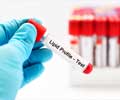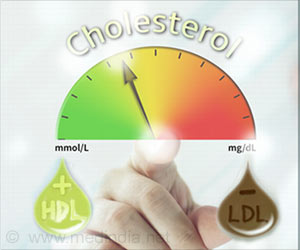Patients with elevated levels of fat in their bloodstream – nearly 10 percent of Americans – are more likely to develop arthrosclerosis, which can lead to a heart attack or stroke.
Maybe you ate a big, juicy steak for dinner last night, adding a large amount of fat – scientifically known as triglycerides – to your system. For one in ten of us, that could be a big problem.
Although we try to reduce fat in our diet, our bodies use it for energy. But patients with elevated levels of fat in their bloodstream – nearly 10 percent of Americans – are more likely to develop arthrosclerosis, or build-up of plaque in the arteries, which can lead to a heart attack or stroke.In work with mice, researchers at the University of California, San Diego (UCSD) School of Medicine discovered a factor that could be responsible for many unexplained cases of elevated triglyceride levels.
In humans, this condition can be diabetes-related, diet-induced, or caused by drug interactions or chronic alcohol consumption. The problem can also run in families. But it turns out that another important factor is sugar – a complex one produced by all cells in the body called heparan sulfate, which is related to the anti-coagulant heparin.
The UCSD team found that heparan sulfate in the liver helps the body clear triglycerides from the blood. Their study, published in the January 1 issue of the Journal of Clinical Investigation, suggests that some patients with elevated triglyceride levels could have changes in heparan sulfate in the liver. The discovery could pave the way for new therapies for a major and growing medical problem.
“The work confirms that heparan sulfate in the liver plays a crucial role in clearing fat,” said Jeffrey D. Esko, Professor of Cellular and Molecular Medicine at UCSD’s School of Medicine. “These molecules clear triglycerides and cholesterol from the blood, working alongside the better known LDL receptors”
The UCSD researchers created a mouse model with a mutation of heparan sulfate, which resulted in elevated triglyceride levels, like those seen in many patients with diabetes. The researchers made mutations in only in the liver, because such mutations throughout all tissues would lead to the death of an embryo or death shortly after birth.
Advertisement
“The finding, that the LDL receptor plus heparan sulfate work together to clear triglyceride and cholesterol-rich particles from the blood in a healthy person is very exciting,” Esko said. The study suggests the possibility that mutations in one of 40 or so genes involved in production of heparan sulfate in the liver could result in high blood-fat levels and lead to complications such as arthrosclerosis, according to Esko.
Advertisement
“Such studies could lead to new drugs that change heparan sulfate in order to lower fat levels in patients,” said Esko.
Source-Newswise
SRM










